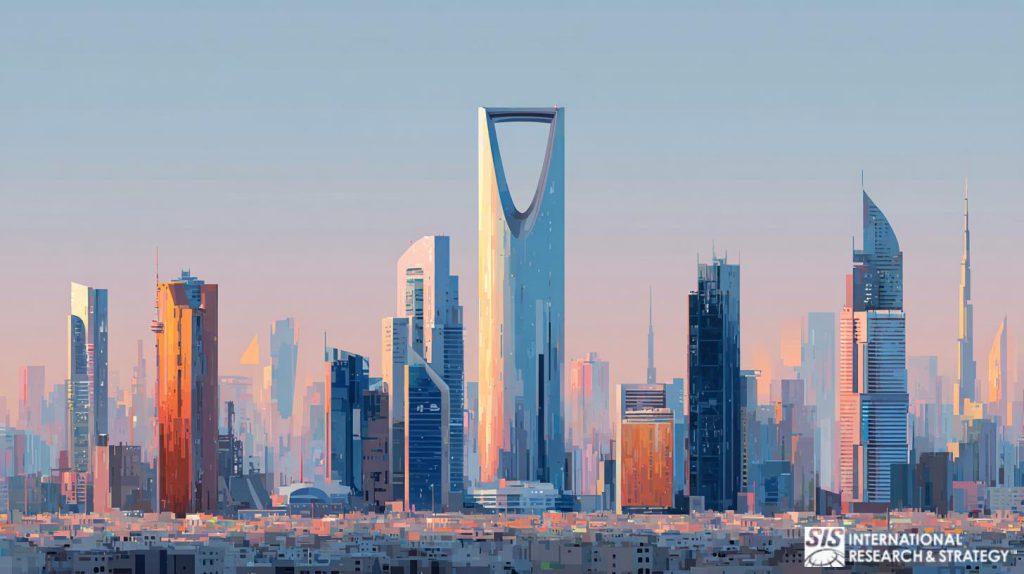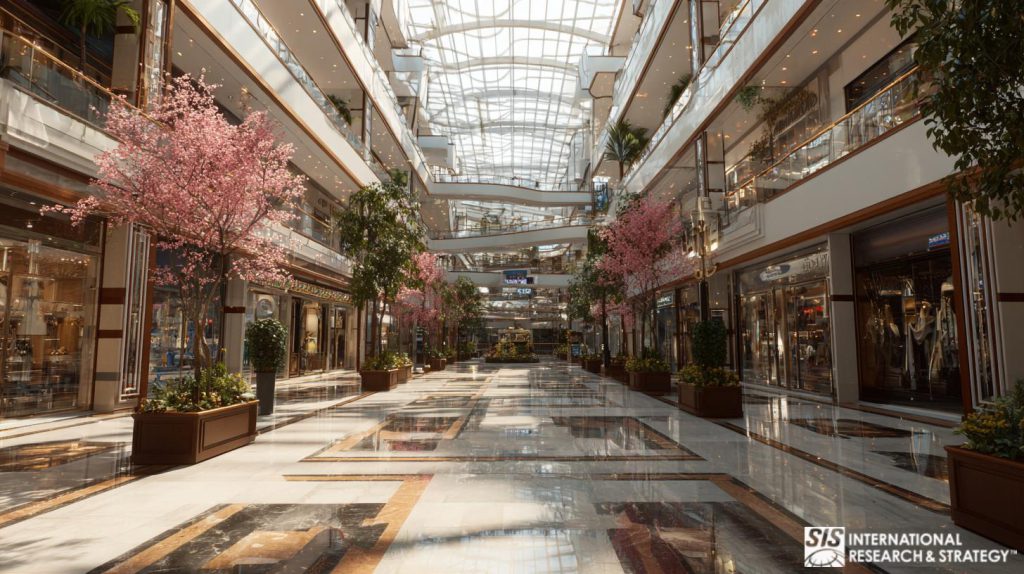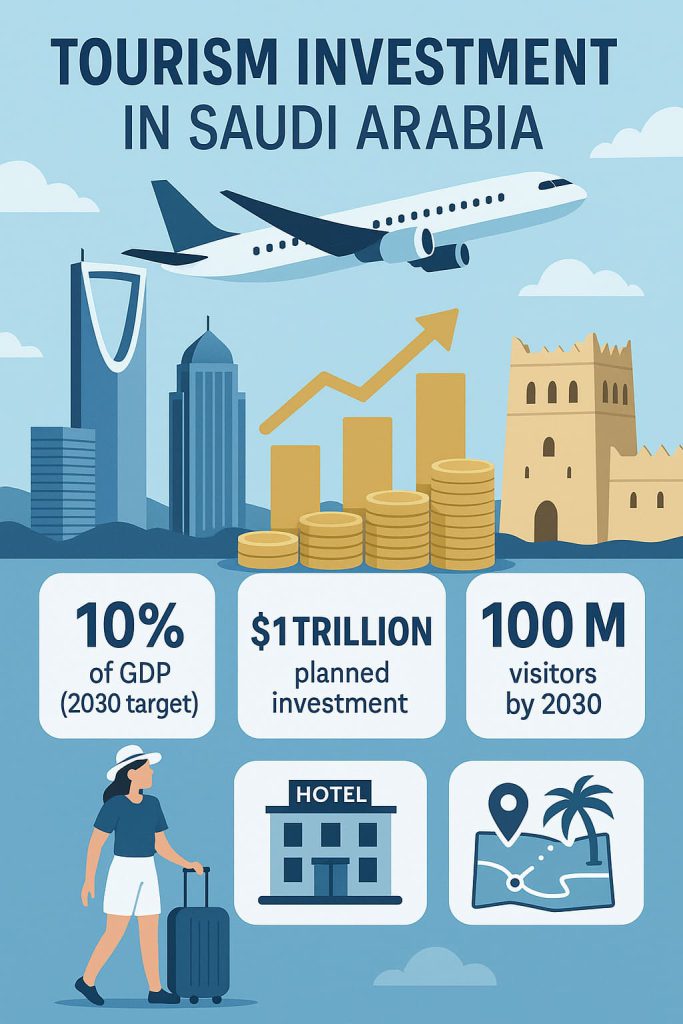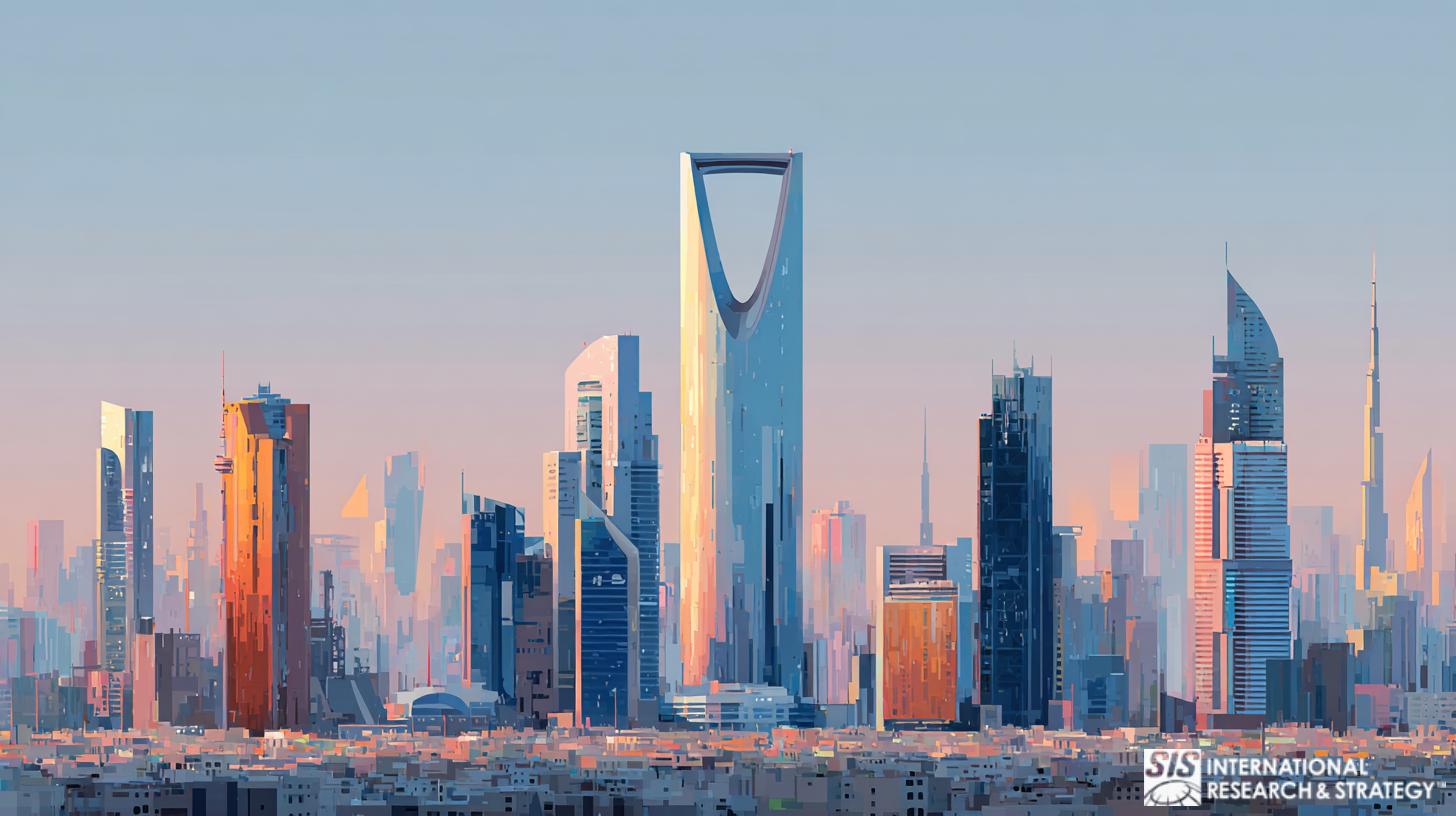Tourism Investment in Saudi Arabia

Forget everything you thought you knew about Saudi Arabia. Seriously, delete it from your brain. While you’ve been busy chasing overpriced tech stocks and doom-scrolling through your Twitter feed, the Kingdom has been quietly—actually, not so quietly—orchestrating what might be the most audacious, mind-boggling tourism transformation in human history.
Table of Contents
✅ Listen to this PODCAST EPISODE here:
The Saudi Tourism Revolution: Not Evolution, But Reinvention
Saudi Arabia is completely, utterly, and irreversibly reinventing itself as a global luxury destination that aims to simultaneously compete with—and then obliterate—Dubai, Bali, and the Maldives from the consciousness of luxury travelers.
The Vision 2030 plan? It’s the meticulously crafted blueprint for perhaps the most dramatic economic pivot in modern history, with tourism as the gleaming, ambitious, no-failure-permitted centerpiece. The targets would sound completely delusional if they weren’t backed by virtually unlimited sovereign wealth and the absolute determination of a monarchy that doesn’t understand the concept of “impossible”:
- 150 million annual visitors by 2030. Not 10 million. Not 50 million. Over ONE HUNDRED MILLION. Up from practically zero international leisure tourists just four years ago. That’s like going from having no tech industry to surpassing Silicon Valley in a decade.
- Tourism contributing 10% to GDP, up from roughly 3%.
- 1 million+ new tourism jobs for Saudi citizens in a country frantically diversifying from oil. Not low-wage positions—we’re talking career-track hospitality roles with international training.
- Over 300,000 new hotel rooms across dozens of newly invented destinations. For perspective, that’s more than all the hotel rooms in a tourism powerhouse like Thailand.
The Red Sea Project: Redefining Luxury Tourism from Scratch (And Making Billionaires Nervous About Their Island Investments)

Let’s talk about The Red Sea Project, because it perfectly encapsulates why tourism investment in Saudi Arabia is operating in a completely different universe from your typical “emerging market opportunity.”
Most luxury resort developments around the world? They might encompass a few square kilometers of prime beachfront. Maybe a dozen hotels if they’re really ambitious. The Red Sea Project? It spans a mind-melting 28,000 square kilometers—an area larger than BELGIUM.
The numbers don’t just impress—they obliterate conventional understanding of scale in tourism development:
- $23.6 billion in initial tourism investment in Saudi Arabia. Not million. BILLION.
- 50 hotels and 8,000 luxury rooms by 2030, each positioned to compete with the world’s most exclusive properties
- 22 islands being developed (out of 90+ in the archipelago), each with its own character and target market
- Zero carbon footprint (the entire destination aims to be powered 100% by renewable energy, proving that Saudi environmental ambitions have leapfrogged most Western developments)
- Expected to generate 70,000 jobs and contribute $5.9 billion annually to the Saudi GDP (numbers that would make most tourism ministers worldwide faint from envy)
The first phase with three hotels opened in 2023, and the response from ultra-high-net-worth travelers has been nothing short of euphoric. Room rates starting at $1,500 per night aren’t deterring bookings—they’re creating waitlists and a kind of exclusivity buzz that even established luxury destinations struggle to generate.
NEOM and Trojena: The Future of Tourism Reinvented (And It’s Absolutely Insane)
If you thought The Red Sea Project sounded ambitious, NEOM will make your brain short-circuit. This $500 billion giga-city—yes, that’s half a TRILLION dollars—isn’t just a tourism destination; it’s a crazy attempt to completely reinvent how humans live, work, and travel in the 21st century. And within this massive development that defies easy categorization, tourism investment in Saudi Arabia reaches its most mind-bendingly futuristic expression.
Particularly noteworthy is Trojena, NEOM’s mountain destination that boldly promises year-round skiing in a country famous for having some of the hottest deserts on planet Earth. Yes, you read that correctly. Skiing. In Saudi Arabia. Year-round. Not just a small indoor slope like Dubai’s Mall of the Emirates. Actual mountainside skiing. In Saudi Arabia.
Early investors who’ve secured development rights in Trojena are positioning themselves for what could become the most distinctive and talked-about mountain destination in the entire world—a winter wonderland literally engineered into existence in the desert that breaks every rule in conventional tourism development.
“People laughed when Dubai built an indoor ski slope,” one development executive told me over coffee in Riyadh, speaking so quickly he barely touched his pastry. “They’re not laughing anymore, are they? Now multiply that ambition by a hundred, make it outdoors, add world-class architecture that would make Switzerland jealous, and back it with essentially unlimited sovereign wealth. The result won’t just attract tourists—it will fundamentally redefine what humans believe is possible in destination development.”
AlUla: Where Ancient History Meets Modern Luxury (And Makes Egypt Nervous)
Not all tourism investment in Saudi Arabia focuses on creating insanely ambitious future-forward developments. In AlUla, the Kingdom is investing billions—not to build something new—but to preserve and showcase a past that rivals Egypt’s pyramids in historical significance yet remains virtually unknown to international travelers.
AlUla is a massive 22,561 square kilometer living museum containing Hegra, Saudi Arabia’s first UNESCO World Heritage Site, with spectacular tombs carved into towering sandstone cliffs by the same ancient Nabataean civilization that built Petra in Jordan. The difference? While Petra hosts millions of visitors annually, AlUla has been largely inaccessible to non-Saudi visitors until just recently.
The tourism investment in Saudi Arabia approach here isn’t just substantial—it’s being executed with a level of sophistication that’s making cultural tourism experts around the world sit up and take notes:
- $15 billion allocated to transform the region into a world-class heritage destination that could potentially rival Egypt’s cultural tourism juggernaut
- Carefully curated cultural programming, including the Winter at Tantora festival that attracts global celebrities and performances that would be at home on the world’s most prestigious stages
They’re methodically creating what might become the single most exclusive cultural tourism destination on the planet—where history, luxury, and controlled access combine to create something entirely new in the luxury tourism market.
What makes AlUla particularly fascinating for investors is the deliberate artificial scarcity model being implemented. Unlike other Saudi giga-projects focused on scale and eye-popping statistics, AlUla is intentionally, strategically limiting development, creating a natural supply constraint that virtually guarantees premium pricing power for decades to come.
The early results? They’re so good they almost sound made up. Luxury tented camp operators report extraordinary performance metrics that would be considered suspect if they weren’t being independently verified.
Diriyah Gate: Creating the Arabian Peninsula’s Cultural Capital (While Most Investors Are Looking Elsewhere)
Just 15 minutes from downtown Riyadh sits Diriyah, the original historical home of the Saudi state and a UNESCO World Heritage Site that’s now the focus of a jaw-dropping $50.6 billion megaproject.
Diriyah Gate isn’t playing small ball. Consider what’s underway:
- 20 luxury hotels including brands like Aman, Six Senses, and Raffles that typically only plant their flags in globally significant destinations
- 100+ dining and entertainment venues that will make this development a gastronomic powerhouse
- Traditional Najdi-style architecture throughout, creating not just a tourism destination but a cohesive cultural statement about Saudi identity
- Direct integration with Riyadh’s population of 7+ million, ensuring consistent visitor flow even before international tourism fully materializes
The first section, Bujairi Terrace, opened in 2022 with premium dining concepts that would feel at home in London or New York. It hasn’t just “done well” or “met expectations”—it has absolutely exploded, becoming one of Riyadh’s most sought-after evening destinations almost overnight, with restaurants reporting two-month waiting lists for weekend reservations. Not two days. Two MONTHS.
What makes Diriyah particularly compelling for investors—and this is crucial—is its hybrid model that completely sidesteps the traditional vulnerability of pure tourism plays.
Navigating the Tourism Investment in Saudi Arabia Landscape: Essential Realities

Tourism investment in Saudi Arabia offers potential returns that would be impossible in mature markets, but it comes with unique considerations that investors need to navigate:
Regulatory Framework: Evolving at Warp Speed
The Saudi tourism regulatory environment is evolving at breakneck speed as the Kingdom races to create a framework that supports its ambitious goals:
- The Ministry of Tourism and the Tourism Development Fund have created streamlined processes for priority projects
- Foreign investment restrictions have been systematically dismantled in the tourism sector
- Alcohol regulations are being cautiously liberalized in certain tourism zones
- Entertainment restrictions continue to evolve, with previously forbidden activities increasingly permitted within tourism enclaves
This creates both opportunity and uncertainty. The direction is clearly toward liberalization, but the pace varies across different regions and project types.
Market Entry Strategies: Multiple Pathways, Different Risk-Reward Profiles
For investors exploring tourism investment in Saudi Arabia, multiple entry strategies exist, each with distinct advantages:
- Direct property development in partnership with Saudi entities
- Hotel management agreements with developers of approved projects
- Investment in tourism-focused private equity funds targeting the Saudi market
- Acquisition of operational assets as early entrants look to exit
- Tourism support services and technology provision
The optimal approach depends on investment scale, risk tolerance, and timeline, with many successful investors adopting a phased strategy that begins with lower-risk participation and expands as they gain market knowledge.
Case Study: Strategic Positioning in an Emerging Luxury Destination (While Everyone Else Was Still Debating If Saudi Tourism Was “Real”)

Let me tell you about Sarah (not her real name, but the story and numbers are absolutely real).
While most hospitality investors were still having boardroom debates about whether Saudi Arabia was “ready” for international tourism or whether Western travelers would ever consider it as a luxury destination, Sarah was already on her third site visit to AlUla in 2019.
Having built luxury boutique properties in emerging destinations across Asia and Africa, she recognized something most investors missed entirely: the extremely rare convergence of world-class natural and historical assets, virtually unlimited development funding, and sophisticated destination management—a combination that had produced extraordinary returns in other markets when properly executed.
Instead of waiting for perfect market data or international brands to validate the opportunity, Sarah leveraged specialized market intelligence and moved with decisive speed:
- She secured a long-term land lease for a luxury tented camp at approximately 40% below current market rates—terms that are literally unobtainable today as land values have skyrocketed
- Developed personal relationships with key executives at the Royal Commission for AlUla that provided early access to visitor projection data that competitors still don’t have
- Created training programs for local staff before talent competition intensified, securing the region’s most promising hospitality professionals while other operators now struggle with staffing
- Established supply chain relationships when few international luxury suppliers had Saudi operations, ensuring consistent access to critical materials while newer entrants face delivery delays
Her approach appeared high-risk at the time—so much so that several of her previous investors declined to participate, citing “excessive market uncertainty.” Those same investors are now desperately trying to find comparable opportunities after seeing her results.
While most luxury properties globally consider a 3-4 year path to profitability normal, Sarah’s AlUla property hit operational profitability within just 14 months—approximately 60% faster than comparable luxury developments in established markets—while requiring substantially lower capital investment than traditional concrete-and-steel luxury hotels.
Her initial investment is on track to be fully recovered within 3.5 years, creating an ROI profile that would be mathematically impossible in mature luxury tourism markets where acquisition costs alone often require 7-10 year payback periods.

Summary: Tourism Investment in Saudi Arabia
✅ Unprecedented Scale: Saudi Arabia’s tourism transformation represents one of the largest coordinated development programs in history, backed by sovereign wealth and royal decree.
✅ Diverse Opportunities: Tourism investment in Saudi Arabia spans ultra-luxury resorts, cultural destinations, entertainment complexes, and emerging experience categories.
✅ First-Mover Advantage: Despite rapid development, many tourism subsectors remain in early stages, offering significant early-positioning benefits.
✅ Regulatory Tailwinds: Government entities are actively streamlining processes for tourism investments aligned with Vision 2030 objectives.
✅ Location Specificity: Each major project (Red Sea, AlUla, Diriyah, etc.) offers distinct investment characteristics requiring tailored approaches.
✅ 風險緩解: Partnership strategies, phased development, and specialized market intelligence significantly improve success probabilities.
✅ Talent Challenges: The rapid tourism expansion has created significant demand for experienced hospitality professionals, making talent strategy a critical success factor.
What Makes SIS International a Top Resource for Tourism Investment in Saudi Arabia
This market demands specialized intelligence that goes miles beyond standard analysis written by researchers who’ve never set foot in a Saudi giga-project. Here’s why serious investors with actual capital at stake rely on 安全資訊系統:
- CUSTOMIZED APPROACH: Each Saudi tourism giga-project isn’t just slightly different—they’re operating in completely different universes. The Red Sea requires different strategies than AlUla. Diriyah faces different challenges than Trojena. Using one-size-fits-all market analysis isn’t just inadequate—it’s a recipe for expensive failure. Each requires tailored analysis addressing its unique regulations, timelines, and market dynamics, which generic “Saudi tourism” reports often overlook.
- THE 40+ YEARS OF EXPERIENCE: In a market undergoing tectonic shifts, historical context isn’t just helpful—it’s absolutely essential for separating genuine opportunities from expensive mirages. Firms with decades of Middle Eastern market experience like SIS國際研究 don’t just provide data; we provide the crucial pattern recognition that distinguishes permanent shifts from temporary policy experiments.
- THE GLOBAL DATABASES FOR THE RECRUITMENT: Success in Saudi tourism hinges entirely on who you partner with. Full stop. Access to meticulously maintained databases tracking vendors, operators, developers, and potential partners—including their actual track records in the region, not just their polished marketing materials—allows for the kind of thorough due diligence that prevents catastrophic partnership mistakes before millions are committed.
- PROJECTS GET DONE FAST: In markets evolving at Saudi Arabia’s breakneck pace, conventional due diligence timelines are career-ending luxuries. Prime opportunities that were available last quarter are already locked up while most investors are still scheduling their initial exploratory calls. Rapid market intelligence that delivers actionable insights in days rather than months enables decisive moves on time-sensitive opportunities before the window closes entirely.
- AFFORDABLE RESEARCH: Despite what many assume, specialized Saudi market intelligence doesn’t require an institutional-sized budget. Focused, targeted analysis makes professional-grade intelligence accessible even for individual investors and smaller hospitality companies exploring Saudi opportunities.
- DEEP REGIONAL EXPERTISE: Understanding Saudi Vision 2030’s tourism implementation requires more than reading policy documents or press releases. It demands comprehension of the complex interplay between royal ambition, religious considerations, economic imperatives, and regional politics driving implementation priorities and timelines. This nuanced understanding provides critical insights for investment timing that surface-level analysis consistently misses.
- NETWORK ACCESS: Established connections to key decision-makers, existing operators, and regulatory authorities don’t just streamline the investment process—they often make the difference between being considered for premium opportunities versus being relegated to picking through what remains after connected players have had their selection.
FAQs: Tourism Investment in Saudi Arabia
What minimum capital is typically required for meaningful tourism investment in Saudi Arabia?
Tourism investment in Saudi Arabia spans an extraordinarily wide capital range, creating entry points for various investor profiles. Boutique hospitality concepts in emerging destinations can launch with $2-5 million, though this represents the bare minimum for distinctive offerings. Mid-scale hotels or resorts typically require $20-50 million depending on location and positioning, while luxury developments in premium destinations often exceed $100 million.
Alternative approaches include investing in Saudi-focused hospitality funds, which often accept minimum investments of $250,000-500,000, or acquiring operational stakes in existing properties. Early-stage investment in tourism technology or service providers supporting the sector’s growth can provide exposure with lower capital requirements, typically starting around $1-3 million for meaningful participation.
How are hospitality concepts vetted for cultural appropriateness in Saudi Arabia?
Navigating cultural considerations represents one of the most nuanced aspects of tourism investment in Saudi Arabia. The vetting process varies significantly by project location and target market, with giga-projects like The Red Sea or NEOM operating under more liberal frameworks than developments in traditional areas.
Practical vetting typically involves multiple layers:
- Initial concept review with Saudi advisors familiar with current cultural expectations
- Presentation to relevant tourism authorities based on project location
- Modification based on specific feedback regarding design, operations, or positioning
- Ongoing compliance monitoring as the regulatory environment continues evolving
The most successful hospitality concepts integrate cultural sensitivity from inception rather than retrofitting international models. This includes architectural elements respecting local heritage, thoughtful approaches to gender-related considerations in facility design, and F&B concepts that respect dietary preferences while offering distinctive experiences.
How does Saudi Arabia’s seasonality impact tourism investment returns?
Saudi Arabia’s climate creates distinctive seasonality patterns that directly impact tourism investment returns and operational strategies. Summer months (May-September) bring extreme heat to most regions, limiting outdoor activities and traditionally driving wealthy Saudis to travel internationally. Winter months (November-March) offer pleasant temperatures ideal for tourism.
This natural seasonality varies significantly by destination:
- Coastal destinations like The Red Sea can operate year-round with proper design considerations
- Mountain destinations like Trojena are being specifically engineered to offer year-round appeal
- Urban cultural destinations like Diriyah benefit from domestic demand throughout the year
- Religious tourism to Makkah and Madinah follows distinct patterns based on the Islamic calendar
Successful investors address seasonality through careful positioning, targeted marketing to counter-seasonal markets (particularly visitors from regions where Saudi summer aligns with their winter), and operational flexibility. The most profitable developments incorporate design elements specifically addressing climate challenges, such as indoor-outdoor transitional spaces and climate-controlled environments that extend comfortable usage periods.
What staffing considerations impact tourism operations in Saudi Arabia?
The explosive growth in Saudi tourism has created significant human resource challenges that directly impact operational performance and investment returns. Key considerations include:
- Saudization requirements mandating minimum percentages of Saudi nationals across various hospitality roles
- Limited experienced hospitality workforce requiring substantial training investment
- Competition for talent intensifying as hundreds of properties open simultaneously
- Cultural considerations for guest-facing positions in more conservative regions
- Managing multinational staff teams with varying experience levels and cultural expectations
Leading operators address these challenges through comprehensive approaches:
- Creating dedicated hospitality academies developing Saudi talent pipelines
- Establishing clear career advancement pathways attracting local workforce
- Implementing cultural integration programs for international staff
- Developing scheduling systems accommodating prayer times and religious observances
- Building blended management teams combining international hospitality expertise with local cultural understanding
What exit strategies exist for early investors in Saudi tourism ventures?
The rapid development of Saudi Arabia’s tourism ecosystem is creating multiple exit pathways for early investors, though these vary significantly by project type and scale:
- Acquisition by Saudi investment funds seeking to build domestic hospitality portfolios
- Purchase by international hotel groups expanding their Saudi footprint
- Secondary sales to institutional investors as assets establish operating histories
- Refinancing to extract equity once stabilized operations demonstrate consistent cash flow
- Structured exits through Saudi REITs as the hospitality-focused REIT market develops
- IPO potential for portfolios reaching significant scale
The most notable pattern emerging is the premium valuations commanded by early movers who have demonstrated successful operational models in the Saudi context. Properties with 12+ months of strong operating results are attracting acquisition interest at cap rates 150-200 basis points lower than comparable international assets, reflecting both the growth potential and the proven execution advantage of established operations.
我們在紐約的工廠位置
11 E 22nd Street, Floor 2, 紐約, NY 10010 電話:+1(212) 505-6805
關於 SIS 國際
SIS國際 提供定量、定性和策略研究。我們為決策提供數據、工具、策略、報告和見解。我們也進行訪談、調查、焦點小組和其他市場研究方法和途徑。 聯絡我們 為您的下一個市場研究項目。


